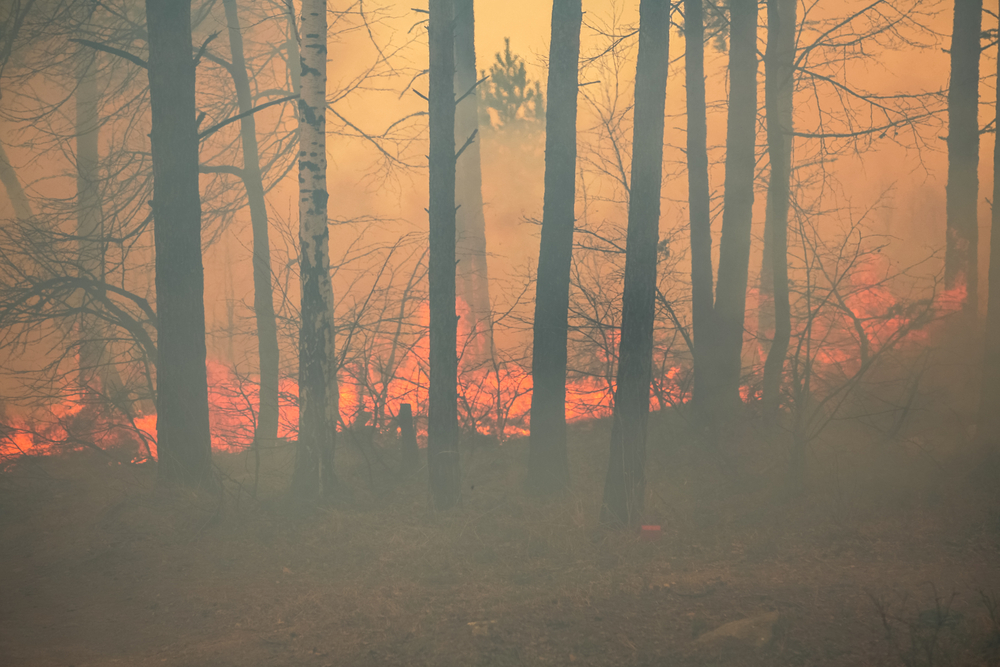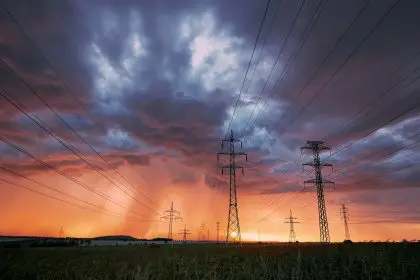A rapid-spreading blaze forces thousands to evacuate as firefighters battle to contain the destruction
The serene landscape of Ocean County, New Jersey has transformed into an apocalyptic scene as a ferocious wildfire continues to tear through the Greenwood Forest Wildlife Management Area. The disaster has displaced thousands of residents and charred over 13,250 acres of land, marking one of the most severe wildfires in the region’s recent history.
Flames race through drought-stricken forest
The crisis unfolds
The blaze, officially designated as the Jones Road Wildfire, erupted early Tuesday in the drought-stricken woodlands of Ocean County. Within hours, it had accelerated beyond initial containment efforts, propelled by a dangerous combination of parched vegetation and powerful wind gusts. The fire’s unprecedented speed caught many residents off guard, forcing emergency services to rapidly implement evacuation protocols.
By Tuesday evening, the inferno had already consumed 8,500 acres. The New Jersey Forest Fire Service reported Wednesday that despite tireless efforts from ground crews and aerial support, the wildfire had expanded to more than 13,250 acres, though firefighters had managed to achieve approximately 50% containment.
The wildfire’s destructive path has not spared local infrastructure. Several businesses in Lacey Township’s industrial park have sustained significant damage, while power outages have affected more than 25,000 customers throughout the region. Utility companies warn that full restoration may take days, further complicating recovery efforts for affected communities.
Emergency response mobilizes as residents flee
Communities in crisis
As the flames advanced, authorities issued mandatory evacuation orders affecting approximately 5,000 residents across multiple communities. Emergency management officials established temporary shelters at local schools and community centers, providing essential services to those displaced by the disaster.
The chaotic evacuation scenes unfolded as families hastily gathered irreplaceable possessions before abandoning their homes to the approaching danger. Traffic congestion on major evacuation routes created additional challenges for both fleeing residents and emergency vehicles attempting to access affected areas.
While the situation remains precarious, officials expressed cautious optimism Wednesday evening, noting that the number of structures still threatened by the fire had decreased to approximately 20. Nevertheless, authorities warned that changing wind conditions could rapidly alter the fire’s trajectory, potentially placing additional communities at risk.
Investigation into fire’s origin continues
Human factors suspected
The precise cause of the wildfire remains under investigation, though authorities have not dismissed the possibility of human involvement. Forest fire officials are examining potential ignition sources, including discarded cigarettes, unattended campfires, or equipment malfunctions that might have sparked the initial flames.
This incident occurs amid heightened concerns about fire risks throughout the northeastern United States, where abnormally dry conditions have created ideal conditions for wildfire ignition and spread. The National Weather Service had issued fire danger warnings for the region in the days preceding the disaster, highlighting the elevated risk posed by the combination of low humidity and gusty winds.
Environmental scientists point to the increasingly concerning pattern of extended dry periods followed by intense wildfire events, suggesting that climate change may be exacerbating these conditions across regions traditionally considered lower-risk for major wildfire activity.
Community solidarity emerges from tragedy
Neighbors helping neighbors
As evacuees navigate the uncertainty of displacement, community members have rallied to provide support. Local religious organizations, businesses, and volunteer groups have established donation centers collecting essential supplies for affected families. Restaurants have offered free meals to evacuees and emergency responders, while area hotels have extended discounted rates to those unable to return home.
Social media platforms have become vital communication channels, with community pages sharing real-time updates and coordinating assistance efforts. The outpouring of sympathy and support demonstrates the resilience of these tight-knit communities even as they face unprecedented challenges.
Many residents have expressed profound gratitude for the forest firefighters working around the clock to battle the blaze. These specialized crews, often operating in dangerous conditions with limited resources, have been instrumental in preventing further catastrophic damage to residential areas.
Wildfires: A growing national concern
From coast to coast
The New Jersey disaster follows a troubling pattern of increasingly destructive wildfires across the United States. Earlier this year, Los Angeles experienced catastrophic blazes that destroyed over 18,000 structures and claimed dozens of lives. Those fires, accelerated by powerful Santa Ana winds reaching 100 mph, demonstrated how quickly wildfire situations can escalate beyond control.
The increasing frequency and intensity of wildfires nationwide has prompted renewed calls for comprehensive forest management strategies and enhanced emergency preparedness. Fire ecology experts stress that while wildfires have always been part of natural ecosystems, climate change is altering traditional fire patterns and extending fire seasons into previously uncommon periods.
In regions like New Jersey, where large-scale wildfires were historically rare, communities and emergency services are now facing unprecedented challenges in responding to these events. The adaptation process includes updating evacuation protocols, expanding firefighting resources, and implementing more rigorous fire prevention measures.
Looking ahead: Recovery and resilience
The long road forward
As containment efforts continue, affected communities face the daunting prospect of rebuilding. State officials have begun mobilizing resources to assist with recovery, including emergency funding allocations and expedited permit processes for reconstruction activities.
Environmental recovery will represent another significant challenge. The burned forest areas will require careful monitoring and potentially active rehabilitation efforts to prevent erosion, water quality issues, and the establishment of invasive species that often follow wildfire events.
Local officials have emphasized the importance of collective action in both immediate recovery and long-term community resilience. Public information sessions are being planned to help residents understand available assistance programs and best practices for rebuilding in ways that reduce future fire risks.
While the immediate crisis remains the primary focus, many community leaders are already discussing how to better prepare for future wildfire threats. These conversations include enhanced early warning systems, improved evacuation routes, and community-based fire prevention initiatives aimed at creating more fire-resistant landscapes.
As Ocean County confronts this devastating event, the community’s response exemplifies the powerful human capacity for compassion and determination in the face of disaster. Though the path to recovery will be challenging, the shared commitment to rebuilding offers hope for a resilient future beyond the ashes of today’s tragedy.

















